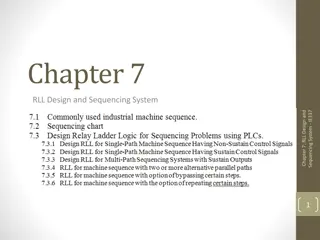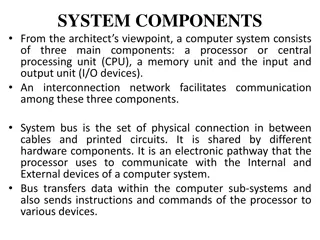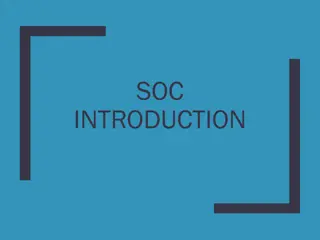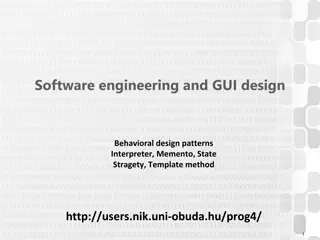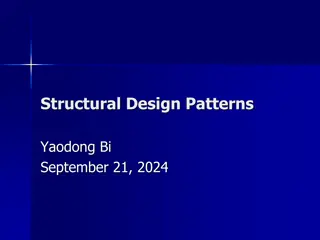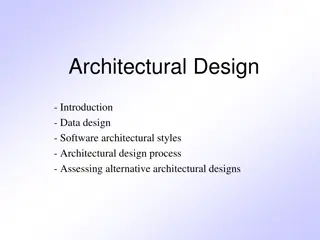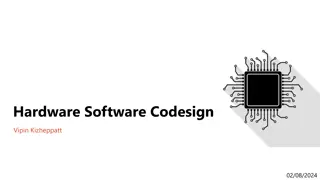Comprehensive Guide to System Design Components and Techniques
System design involves the detailed planning and identification of components in an information system, aiming to provide users with a general understanding of the new system. This process includes techniques like flowcharts, prototyping, and component design, covering aspects such as output design, input design, database design, and file types. By breaking down the system design process into various stages and components, analysts can effectively design and model information systems to meet user and organizational needs.
Download Presentation

Please find below an Image/Link to download the presentation.
The content on the website is provided AS IS for your information and personal use only. It may not be sold, licensed, or shared on other websites without obtaining consent from the author. Download presentation by click this link. If you encounter any issues during the download, it is possible that the publisher has removed the file from their server.
E N D
Presentation Transcript
SYSTEM DESIGN Goal : To provide general description about the new system to user. System design is the preparation of detailed design and identify the components of an information system that will be designed in detail
SYSTEM DESIGN TECHNIQUE Flowchart or Forms Sketch Technique Prototyping Design by Prototyping Prototype Loop
COMPONENT DESIGN IN GENERAL At this stage, the components of the information system is designed in order to be communicated to the user and not for programmers.
COMPONENT DESIGN 1. General Model Design Systems analyst can design models of the proposed information system in the form of physical system and logical models. Physical system Flowchart Logical Model Data Flow Diagram
COMPONENT DESIGN 2. General Output Design Output type : Internal Output : to support management activity External Output : output that will distributed to outside parties who need it
COMPONENT DESIGN Stages in designing output : Determine the new system needs Determine the output parameter
COMPONENT DESIGN 3. General Input Design Process of Data Input : Data Capture Data Preparation Data Entry
COMPONENT DESIGN 4. Database design Implementation of the information system database called database system is an information system that integrates a collection of data related to each other and make it available to a wide range of applications within an organization
COMPONENT DESIGN File Types : Master File : Reference Master File Dynamic Master File Transaction File Report File History File Backup File Working File
COMPONENT DESIGN Stages in database design : Determine files needed for new database Determine database parameter that consist of file types, file media, file organization, and key field of file
COMPONENT DESIGN 5. Technology Design Technology used to capture input, run model, storing and access data, distributing output and help to control all system. Technology consist of Hardware, Software and Brainware
COMPONENT DESIGN 6. Control Design Implementation of the information system database called database system. Control that applied to the system is very useful information for the purpose of preventing / keep the things that are not desirable. Control in information systems can be categorized into general controls and application controls.
COMPONENT DESIGN General Control : Organization Control Documentation Control Hardware Control Physical Security Control Data Security Control Communication control
COMPONENT DESIGN Application Control Input Control Process Control Output Control
PROGRAMMING Computer Programming group and tell the computer how to carry out sequential statements are exactly the point is to any work.
PROGRAMMING Stages in creating program : 1. Defined Problem 2. Software Design 3. Program Design 4. Program Coding 5. Testing 6. Installation 7. Documentation
PROGRAMMING Tools to Create a Program : 1. Flow Chart Is a form of charts / diagrams of algorithms in which the symbols represent standard operations that need to display and demonstrate their implementation sequence Consist of 2 sets of symbol : System Flowchart flow chart that gives an overview of the entire operation without extensive decomposition of all the steps specific input, processing and output will actually be implemented Program Flowchart After the outline of the entire system is complete, the program designers create flow chart macro / program flowchart. Macro flow chart describing the major segments of a complete computer program
PROGRAMMING 2. Pseudocode Informal statement of a program algorithm that uses words and mathematical symbols to show the elements and flows. Pseudocode is a computer language that incorporates mixed declarations and grammar of a variety of computer languages mixed with English phrases
PROGRAMMING 3. Decision Table a program design tool used to specify a logical and complex conditions and actions that can be performed
PROGRAMMING 4. Structured Chart Is a program to design tools that help programmers organize large programs and have many parts. Structure chart will show the whole structure of complex programs and describe the relationships between the various parts are called modules
PROGRAMMING 5. HIPO Chart (Hierarchy plus Input-Process-Output) Chart HIPO (Hierarchy plus Input-Process-Output) demonstrated what a program is doing, what data is used and the resulting output. HIPO chart easier to read than the flow chart, very detailed, flexible, easily modified and maintained.
PROGRAMMING In making HIPO chart, there are 3 types of diagrams needed: a) Visual Table of Contents (the visual table of contents / VTOC) b) Chart review c) diagram details
QUESTION 1. Find symbols of : Flowchart HIPO Structured Chart



